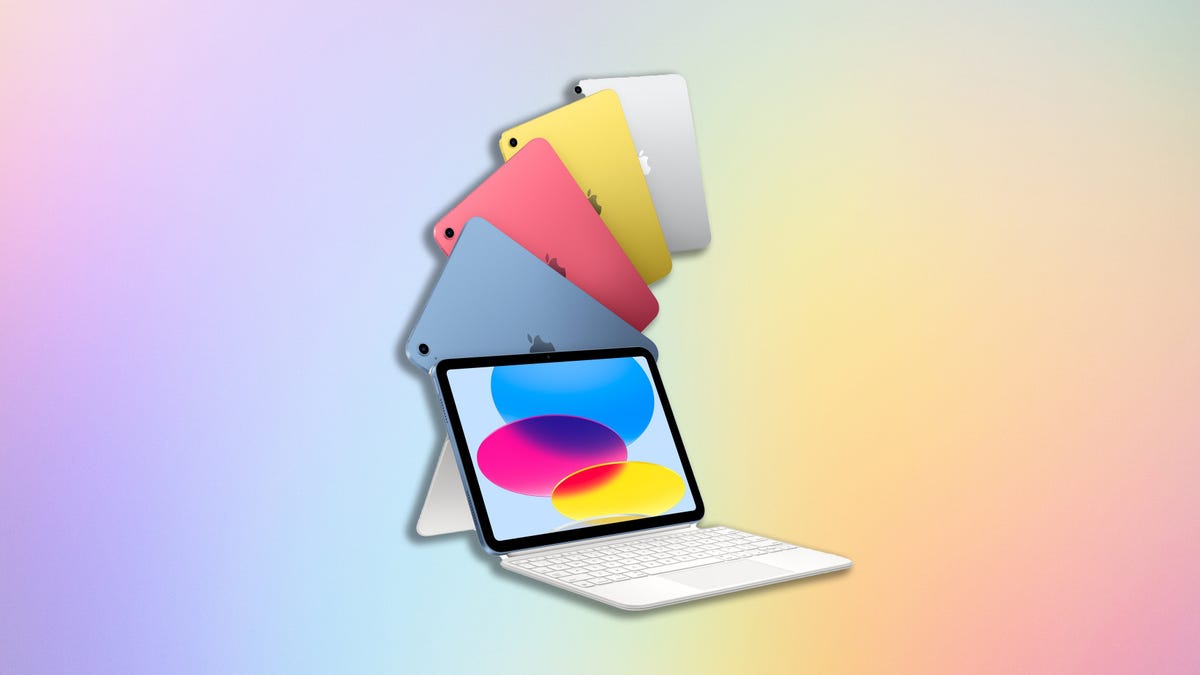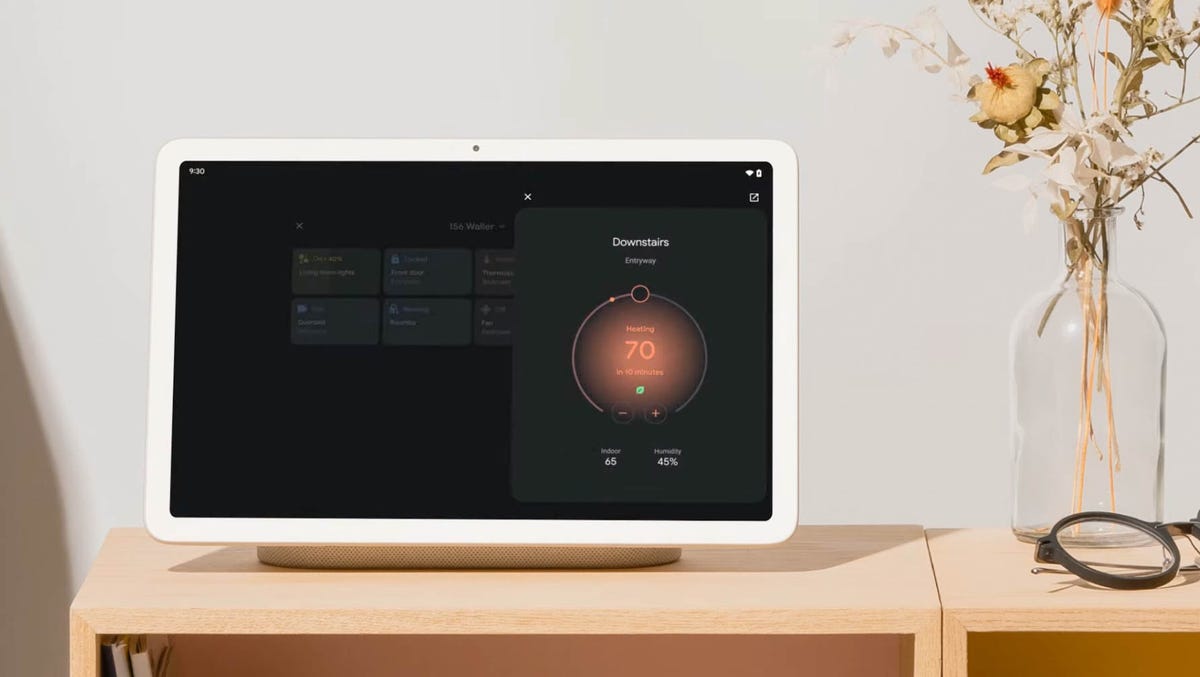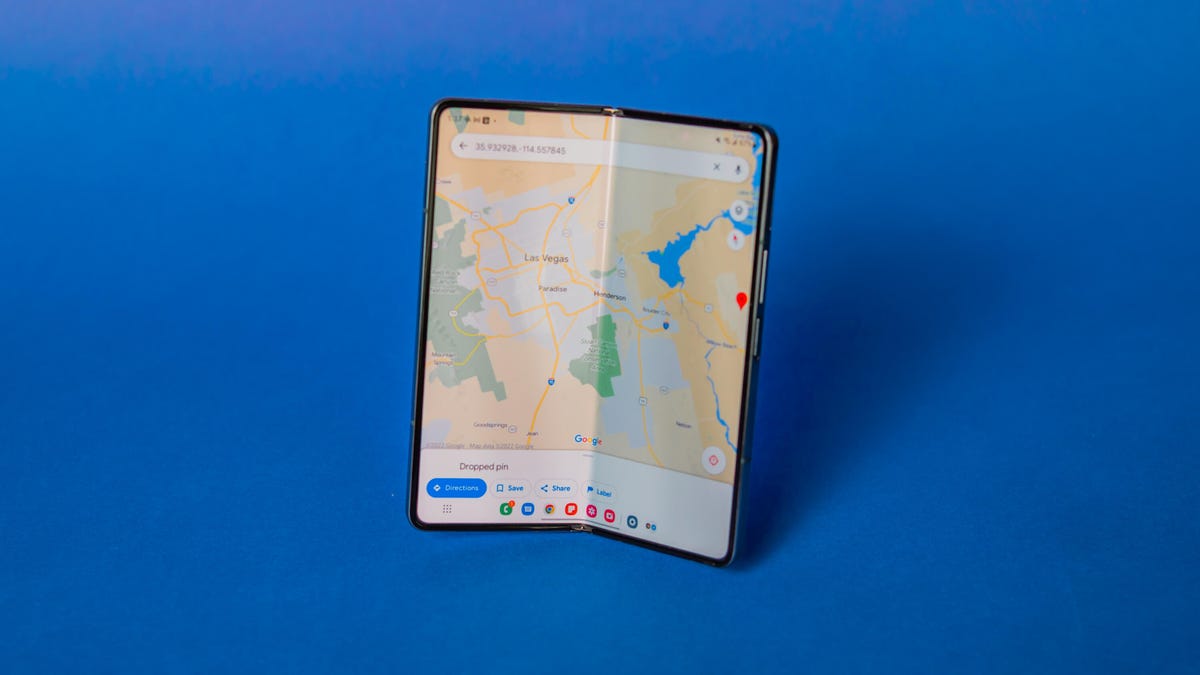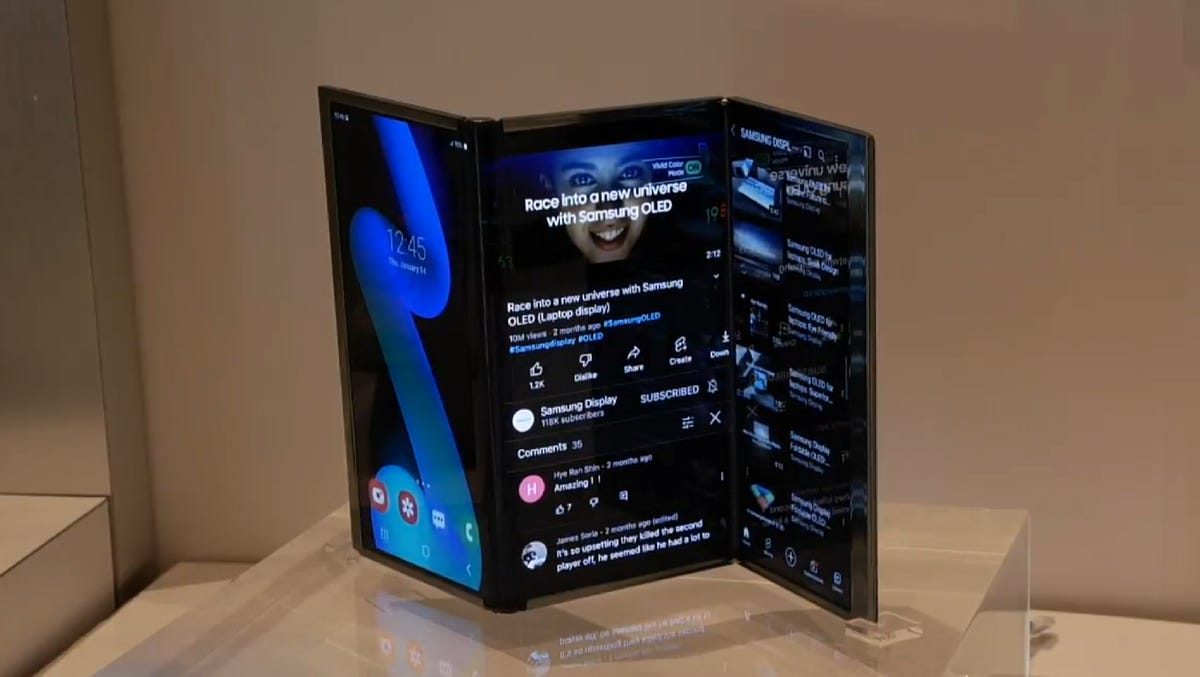Smartphones are tiny computers, but the appeal behind them is simple. We rely on them for everything: communicating, shopping, getting directions, banking, working and gaming. The same isn’t true for tablets, which seem to constantly fluctuate between serving as oversized phones, laptop replacements or something else entirely.
Just look at Apple’s new iPad lineup and Google’s upcoming Pixel tablet if you need proof.
Apple’s new iPad and iPad Pro for 2022 each make its lineup more diverse — but also more cluttered — than ever before. Google completely pivoted its tablet strategy with a new Pixel device coming in 2023 that will essentially double as both a tablet and a smart home hub. And Samsung is experimenting with ways to blend the phone and tablet experience into one with its Galaxy Z Fold lineup and other foldable concepts.
The approaches are different, but the message is the same: It’s getting increasingly difficult to define the tablet’s place in our lives because it’s always shifting. That’s evidenced by the degree of experimentation and change we’re seeing in the market from Apple, Google and Samsung.
While phones and laptops are largely designed to fulfill the same purpose regardless of which company makes them, tech giants seemingly have different answers for what a tablet should be in 2022 and beyond. That will hopefully result in devices that are ultimately more useful and valuable in the long term, but it could make for a muddied shopping experience in the interim.
Apple’s new iPad lineup brings more choice and more confusion

Apple introduced the 10th-generation iPad in October 2022.
Apple
Apple, Google and Samsung have all announced new tablet devices over the last few months, and they each take a distinct approach. Apple is the most recent; it just added two new devices to the iPad family this week.
There’s the new $450 iPad, which is either meant to be a cheaper version of the $600 iPad Air or a more-expensive successor to the $329 iPad. The new iPad inherits the Air’s flat edges, fingerprint sensor embedded in the home button, 10.9-inch edge-to-edge screen and USB-C charging port. But it also has the A14 Bionic chip that was introduced alongside 2020’s iPhone 12, similar to how the $329 iPad has the iPhone 11’s A13 Bionic chip. Apple also announced a new version of the iPad Pro powered by the same M2 processor found inside the latest MacBook Airs and MacBook Pros on the same day.
While that means more choices for iPad shoppers, it also makes Apple’s tablet lineup feel crowded and confusing. With the $450 iPad, $600 iPad Air and $800 11-inch iPad Pro all running similar software and serving similar purposes, customers might have a more difficult time deciding which iPad best suits their needs.
There’s another confusing element to Apple’s current iPad strategy: the Apple Pencil stylus. While the USB-C port on the $450 model is great, the decision to have the tablet only be compatible with the first-generation Apple Pencil, which charges via the iPad’s Lightning port, is baffling.
Since the new model no longer has a Lightning port, buyers will need to use a $9 dongle to connect the Pencil to their iPad. Apple has a new second-generation Pencil, but that stylus only works with the iPad Air, new Mini or Pro. This may not be a deal-breaker for most people, but it’s still a perplexing decision. The simple way Apple’s accessories easily connect to their devices is one of the biggest benefits of its product ecosystem, adding friction to an accessory like the Apple Pencil seemingly detracts from that point.
There’s some confusion in Apple’s approach to iPad software, too. The company has added new multitasking features to the iPad in recent months like Stage Manager, which lets you run multiple overlapping windows on an iPad. While that feature makes the iPad more useful as a work device, it’s only available on certain models, including the iPad Pro and 5th generation iPad Air. That suggests it likely won’t be available for the new $450 iPad, meaning the experience wouldn’t be consistent, even across all the latest models. Additions like Stage Manager help Apple further distinguish between its cheaper and premium iPads, but it also shows Apple’s tablets are toeing the line between productivity and entertainment.
Microsoft, on the other hand, is taking an opposite approach compared to Apple’s. Its line of Surface tablets, which is now 10 years old, has always been squarely aimed at those who want a more portable alternative to the traditional laptop. Microsoft may not have as much market share as Apple or Samsung, but the Surface lineup popularized the idea of regularly pairing a keyboard with your tablet. It arguably set the stage for the iPad Pro and other similar devices.
Say what you will about Apple’s cluttered tablet lineup, but the company has clearly done something right. Apple is the market leader when it comes to tablet sales, cornering 34.8 percent of the global market, according to research firm Canalys. The iPad also had a moment during the early era of the pandemic as people sought more devices for working remotely and socializing virtually.
Google’s Pixel tablet is part tablet, part smart home display

Google’s Pixel tablet, coming in 2023, doubles as a tablet and smart display.
Screenshot/CNET
With its upcoming Pixel tablet, Google is taking an approach that’s decidedly different from its many previous attempts at breaking into the market. Instead of creating a device designed to assume some of the duties of our phones or laptops, Google’s upcoming tablet will essentially function as a smart home display with a removable screen.
The new tablet isn’t launching until 2023, but Google provided a preview of the device during its fall product launch on Oct. 6. The Pixel tablet can magnetically attach to a speaker dock, turning it into a Nest Hub-like device that can play music, control smart home devices and serve as a digital photo frame. When used without the dock it otherwise behaves like a regular Android tablet, at least according to Google’s presentation.
It’s an approach that’s significantly different from those of rivals like Apple, Samsung and Microsoft, all of which have focused on productivity, entertainment or a combination of both. It’s a smart take on the tablet that could differentiate Google’s from the rest and appeal to a different audience, rather than competing directly with the iPad. Google is the second-largest smart speaker brand in the US, according to 2021 data from Consumer Intelligence Research Partners. That indicates there may be at least some demand for a Google smart home device that can double as a tablet. If successful, the Pixel tablet could also give Google an edge in challenging its biggest competitor, Amazon, which dominates the home speaker market.
But it’s important to remember that Google has struggled to make a name for itself in the tablet world. The Pixel Slate from 2018 attempted to combine the experience of a tablet and a Chromebook, but it never quite caught on like the iPad or even Samsung’s Galaxy tablets. Android tablets more broadly have faced criticism over poor software and app compatibility, an issue Google has tried to address more recently with Android 12L, which was designed specifically for tablets.
Google also has a history of discontinuing products that fail to gain traction, potentially making it hard to become invested in a device that may not have a long life span. Look at its AI-powered Clips camera from 2017, which Google scrapped roughly two years later in 2019. More recently, The Verge reported that Google had canceled its next Pixelbook Chromebook and dissolved the team building it as part of cost-cutting measures.
If Google’s next Pixel tablet is a success, it could provide a lot of value for those shopping for both a tablet and a smart home hub, possibly eliminating the need to buy both. It could also inspire Google’s rivals to think more creatively about their own approaches to tablets and smart home devices. But at the same time, it underscores the idea that what a tablet should be is constantly changing.
Samsung wants to blend tablets and smartphones

Samsung’s Galaxy Z Fold 4
James Martin/CNET
Yes, Samsung has plenty of traditional tablets that walk the line between productivity and entertainment, just like Apple. Its pen-equipped Galaxy Tab S8 lineup is proof of that.
But it also has a vision for how tablets could evolve over the long term. Samsung’s investment in foldables suggests the company sees devices with flexible screens as being a big part of where the mobile industry is headed. Its Galaxy Z Fold line, which is now in its fourth generation, is the biggest evidence of this. It was the first foldable phone design that Samsung launched commercially back in 2019, suggesting Samsung has seen a lot of promise in the idea of combining the smartphone and tablet for years.
The company also provided a glimpse into other concepts it’s exploring at CES 2022, where it showcased several new types of bendable devices. These included tablet-size concepts that can bend in two places, resulting in an accordionlike tri-folding display, in addition to clamshell-style tablets that fold down the center similar to the current Galaxy Z Fold. Samsung also has a concept for a phone with a screen that can expand via a sliding mechanism, transforming it into a small tablet.

Samsung Display revealed several foldable concepts at CES 2022, including the Flex S tablet shown here.
Samsung
Regardless of whether these concepts ever become real products, it’s clear that Samsung sees the future of the tablet as being a device that can shift between smartphone, laptop or tablet mode depending on the situation.
But for now, foldables remain a nascent part of the broader smartphone market. Although shipments of foldable phones are estimated to grow by 66.6% in 2022 compared to 2021, they will only make up 1.1% of the overall smartphone market this year, according to The International Data Corporation. Before it expands into these new concepts, Samsung will have to prove that foldable devices are worth their premium prices. It will also have to make sure the software is compelling and enough to make foldables truly useful.
Still, Samsung has an early lead in the foldables market, and it’s inspired competition from companies such as TCL, Motorola and possibly Google.
If you are buying a tablet, these are the best ones
While the future of how tablets are used may be in flux, there are still worthwhile options on the market today. Apple’s $329 2021 iPad remains one of the best values, with a relatively fast processor, a spacious 10.2-inch screen and access to plenty of apps. The $599 2022 iPad Air is also a good choice for those who need more power, but don’t want to splurge on the Pro, since it runs on Apple’s M1 Mac chip. Android fans looking for a general-purpose tablet for gaming, entertainment and light work will be pleased with the $750 Galaxy Tab S8 Plus. And if you want a portable Windows machine, the new Surface Pro 9 is worth considering. Check out our best Android tablets list, best iPad guide and review of Apple’s newest iPad for more advice.
Maybe the tablet is in need of an update
Smartphones and laptops have always felt essential in some way, and their respective roles are more straightforward. Laptops are for work and school, while phones are for essentially everything else. Where does that leave tablets? They’re meant to fill the gap between smartphone and laptop, but it seems like that gap is always evolving.
And perhaps change is just what the tablet industry needs right now. Global tablet shipments are expected to fall 6.8% in 2022, according to a September report from the International Data Corporation. However, that’s attributable to inflation and the fact that people purchased devices over the past two years in the height of the pandemic rather than any shortcomings with tablets themselves.
Ultimately, the fact that companies are experimenting with different approaches is a good thing in the long term. This type of change and experimentation usually means something better is on the horizon. But for now, we may have to deal with a messy purgatory.




